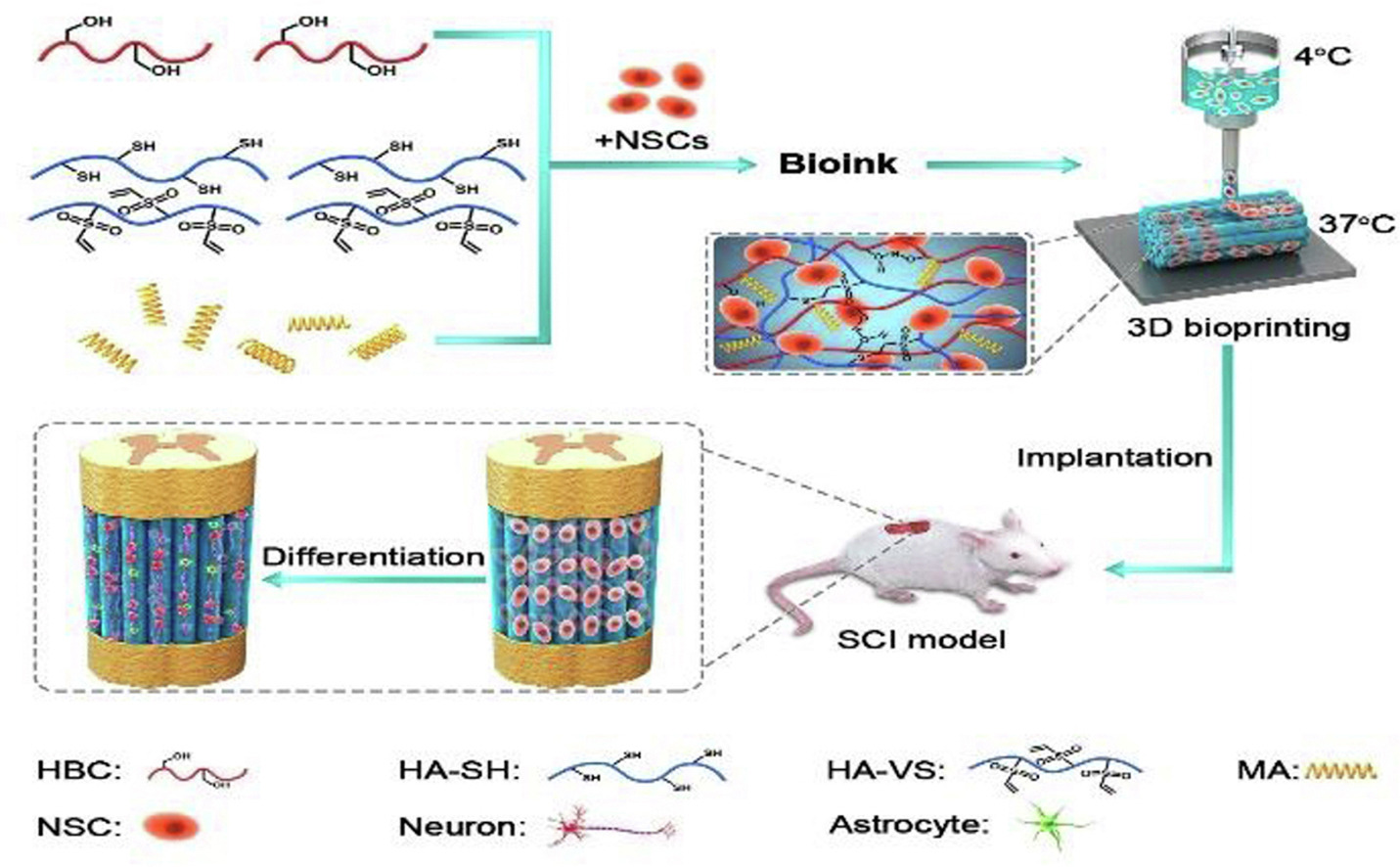文章专利

- 地址: 江苏省苏州市苏州工业园区若水路398号
- 邮箱: tzhang2009@sinano.ac.cn
- 电话: 86-512-62872706
- 传真: 0512-62603079
- 网址: http://nanosensor.sinano.ac.cn

3D Bioprinted Neural Tissue Constructs for Spinal Cord Injury Repair; Biomaterials, 2021, 272: 120771
Xiaoyun Liu; Mingming Hao; Zhongjin Chen; Ting Zhang; Jie Huang*; Jianwu Dai; Zhijun Zhang*;
Abstract:
Three-dimensional (3D) bioprinting has emerged as a promising approach to fabricate living neural constructs with anatomically accurate complex geometries and spatial distributions of neural stem cells (NSCs) for spinal cord injury (SCI) repair. The NSC-laden 3D bioprinting, however, still faces some big challenges, such as cumbersome printing process, poor cell viability, and minimal cell-material interaction. To address these issues, we have fabricated NSC-laden scaffolds by 3D bioprinting and explore for the first time their application for in vivo SCI repair. In our strategy, we have developed a novel biocompatible bioink consisting of functional chitosan, hyaluronic acid derivatives, and matrigel. This bioink shows fast gelation (within 20 s) and spontaneous covalent crosslinking capability, facilitating convenient one-step bioprinting of spinal cord-like constructs. Thus-fabricated scaffolds maintain high NSC viability (about 95%), and offer a benign microenvironment that facilitates cell-material interactions and neuronal differentiation for optimal formation of neural network. The in vivo experiment has further demonstrated that the bioprinted scaffolds promoted the axon regeneration and decreased glial scar deposition, leading to significant locomotor recovery of the SCI model rats, which may represent a general and versatile strategy for precise engineering of central nervous system and other neural organs/tissues for regenerative medicine application.

Full Paper: https://www.sciencedirect.com/science/article/pii/S0142961221001277
